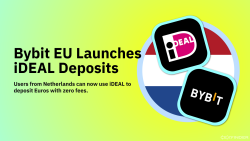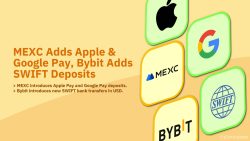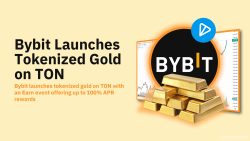With every good investment, the time will come to cash out and reap the benefits. This guide will help you clarify how to sell crypto and withdraw fiat. Fiat is any traditional currency such as USD, EUR, GBP, SGD, HKD, NGN or others.
Bank Transfers
Bank transfers are the cheapest ways to convert crypto to fiat. If you have a bank account, there’s a good chance you can receive some kind of a bank transfer.
To settle transactions, banks in different countries use different methods. In United Kingdom, most banks use Faster Payments (transactions in British pounds – GBP). In the United States, ACH is typically used (transactions in United States dollars – USD). On the other hand, Canada uses Interac (Canadian dollars – CAD). SEPA is how banks clear Euros in European Union. Transfers in Singapore dollars (SGD) are done via FAST.
For international transactions, banks use SWIFT. Through SWIFT payments, banks can send funds to other banks across the world. Downside to SWIFT transactions are fees, which are often a “flat” amount such as $25, plus potentially a percentage of the entire amount (depends on your bank!). For large transactions, the fees through SWIFT payments can really add up. On the plus side, SWIFT can (potentially) be used to send or receive payments in almost any currency.
For domestic transfers (within same country), banks in many countries typically use different systems. For example, PIX is used in Brazil. In India, banks transact with UPI or IMPS. In Argentina, bank payments can be made via local Central Bank of Argentina’s Transferencias 3.0 system. For a more comprehensive look into each country’s bank payments, select your country here and read our guides. In the guides we’re also listing exchanges that support withdrawals to local banks.
In case withdrawals aren’t available in your local fiat currency or transaction method, use SWIFT. You can visit our Crypto Exchanges with SWIFT Withdrawals page to see all platforms supporting this withdraw method. Exact withdrawal fees are displayed in each exchange review.
Card Withdrawals
Card withdrawals are still relatively new, but more and more crypto platforms are adopting this withdrawal method. Basically, card withdrawals let you sell crypto and receive fiat directly on your debit Visa or Mastercard. These transactions are instant, with fees typically between 2% and 5%.
Withdrawals to card are also available through several fiat gateways. Biggest gateways with card withdrawals include Volet, Simplex, MoonPay, and Mercuryo. Simply find an exchange with one of these gateways integrated, and you can use direct to debit card withdrawals. Keep in mind that the gateways often charge fees around or higher than 5% per transaction, and using exchange-provided withdraw channels is always cheaper.
The benefits of card withdrawals are obvious. They’re not overly expensive, and there’s no delays in receiving your funds. You can see our Card Withdrawals page to see all exchanges supporting them, and our reviews will display exact fees.
Digital Wallets & Payments
First off, Google Pay, Apple Pay or Samsung Pay mobile payments can not be used for crypto withdrawals. These payment methods only work for buying crypto, and we don’t know of any exchange that will let you receive money through these mobile apps.
A few traditional and well-known payment methods are available for crypto to fiat withdrawals. These include PayPal, Neteller, Skrill, Revolut, and ZEN. Some of these payment processors don’t like dealing with cryptocurrency, so availability is limited to very few crypto exchanges.
The fees can also be all over the place, but typically between 2% and 5%, and rarely above. Withdrawals are usually processed immediately, and services like PayPal can be used for countless services and stores, making the upsides very clear. Furthermore, services like Skrill, Revolut or ZEN have their own Visa or Mastercard cards that can be used at any ATM or POS.
Branded ATM Cards
More than a dozen crypto exchanges have their own branded Visa or Mastercard debit cards. These are regular bank cards that work for online or offline shopping, can be paired with services like Google Pay and Apple Pay, and can even be used to withdraw cash at ATMs. Some exchanges only have virtual cards, but most have both virtual and physical cards.
Fees vary greatly. In most cases, you can either top-up your card with crypto for free or less than 1%. We noticed that usually when there’s a top-up fee there aren’t any transaction fees. On the other hand, if there’s no top-up fee, you may pay a 1% fee for each transaction. But it’s an observation, not a rule. The cheapest crypto card is KuCard by Kucoin: zero top up fees, zero transaction fees in Euros, and at least 1% cashback on all purchases. You will only pay roughly ~0.30% to convert cryptocurrency into fiat (in KuCard’s case, Euros).
Lots of exchanges also offer cashback, meaning you get a percentage of your spending back as crypto. In rare cases this can be up to 10%. With cashback programs, you can usually expect to get all paid fees back, which is great news for regular spenders.
Biggest downside to crypto ATM cards is regional availability. On most exchanges, these cards are only available in the EU.
Gift Cards
Gift cards deserve a mention, because it’s an easy way to spend small amounts of crypto for regular purchases. Exchanges with gift cards are rare, but let you spend crypto to buy top-up cards for mobile payments, or services like Netflix, Spotify, Amazon, Steam, and many others.
Sometimes, using gift cards can be the only way to spend crypto for “cash” without having to complete identity verification. All the other withdrawal methods will require KYC on every exchange.
P2P Marketplace
Peer-to-peer (P2P) basically means you are directly buying fiat or crypto from another individual user on the platform. Don’t worry about getting scammed: most crypto exchanges with active P2P marketplaces have verified sellers with 1,000+ successful transactions, so the chances of something going wrong are minimal. Plus, there’s all kinds of user protection in place to ensure you receive your funds.
Our P2P trading tag has a list of all major cryptocurrency exchanges with P2P marketplaces. Alternatively, the list below contains five biggest exchanges with P2P markets:
Anyone can become a seller or a buyer on P2P markets. Because of this, large markets have thousands of sellers covering every country and practically any payment method you can think of. If a payment channel exists, chances are you will find someone willing to transact with it.
Of course, there is a downside. Each individual seller can set their own conversion rates or prices. The fees will be fair with most payment methods, often between 2% and 5%. But with very fringe and unpopular payment method, you may be looking at transaction costs up to 15%.
What’s the Best Way to Withdraw Profits?
In short, bank transfers are best. You can find crypto exchanges charging as little as $1 or €1 per bank transaction, no matter what the amount is. That’s assuming your bank account can receive USD or EUR currencies. If not, SWIFT transfers can still be cheap. But to keep costs down, it’s best to do larger transactions rather than few small ones.
Withdrawing directly onto bank cards can be costly when dealing with any amount. But if you don’t consider a 2% fee high, then these are often fastest and most convenient fiat withdrawals. Alternatively, you can apply for a crypto debit card on a supported exchange, and receive a brand new Visa or Mastercard that can be used for everyday spending.
And if you prefer receiving money to existing PayPal, Skrill or other e-wallets or neobanks, you can often find exchanges that support these. If not, find an exchange with a fiat gateway that does support your desired withdrawal method.
When all else fails, you can always turn to P2P markets. If a payment method exists, there’s a very good chance you can find someone that will accept crypto and send you fiat via whatever mobile app, wallet or banking app you may have.
FAQs
- Do exchanges charge fees for fiat withdrawals?
Most exchanges will charge you for fiat withdrawals. This is generally due to their banking partners, as bank transactions are of course not free.
The withdrawal fees vary on a case to case basis, depending on each individual exchange, type of transfer (ACH, SEPA), or amount being withdrawn.
The withdraw fees can be a percentage of the total withdrawal amount, a fixed USD/EUR amount, or a combination of both.
- Do I need KYC to make a fiat withdrawal?
You will need to complete a KYC identity verification process before you are able to make a fiat withdrawal. Crypto exchanges need to adhere to strict AML (anti-money laundering) rules and laws. Exchanges will need to verify your identity before you are able to withdraw to bank accounts.
In part, KYC is also required as a security measure in order to prevent fraud or abuse. No-KYC exchanges will typically only allow you to withdraw crypto unless you complete identity verification.
























